Once the new tech stops being shiny…what then are you left with? Cory Doctorow’s new book Walkaway is all about living in that post-shininess era of technology. What do you keep? What do you allow to fade? And what can be used to truly create a better future?
Walkaway narrows down to see what technological advance truly holds everything together, but Doctorow isn’t the only one who understands that our lives, and the stories they create, tend to hang on a single piece of tech. Here are just a few premises that are casually, irrevocably destroyed when you remove a vital piece of helpful, fictional technology.
Sophons (The Three-Body Problem by Cixin Liu)
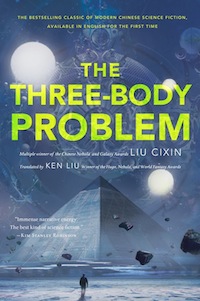 The limits of relativity are a big deal in Cixin Liu’s Three-Body Problem trilogy, but so is cheating them.
The limits of relativity are a big deal in Cixin Liu’s Three-Body Problem trilogy, but so is cheating them.
Sophon technology is an amalgam word, made of the “Sophia” (meaning “wisdom”) and “proton”; it’s a supercomputer that is located in a proton that is unfolded from eleven dimensions into two dimensions, then programmed and refolded. This technology is created and utilized by the alien Trisolaris civilization, and allows them to interact with Earth in real-time, despite being located 4 light-years away. When Ye Zhetai—a woman who has lived through China’s Cultural Revolution and become deeply disillusioned by the cruelty she sees in humanity—alerts Trisolaris to the presence of life in Earth’s solar system, a decades-long process of confirmation and communication begins, with the Earth-Trisolaris Organization (ETO) forming to slowly prepare humanity for the arrival of the aliens.
Years later, a nanomaterials expert named Wang Miao infiltrates the ETO and discovers the Trisolaran plan—phase 1 of the invasion has already begun, using sophon technology to secretly hinder Earth’s science research, particularly as it pertains to particle physics.
Without sophons, Trisolaris’ invasion becomes a shadowy unknown threat instead of an ongoing crisis. It’s the one big cheat that the series allows itself, because otherwise Trisolaris has no way to induce fear in humanity, or stunt our development. Without instant communication, The Three-Body Problem becomes a very different story.
Babel Fish (The Hitchhiker’s Guide to the Galaxy by Douglas Adams)
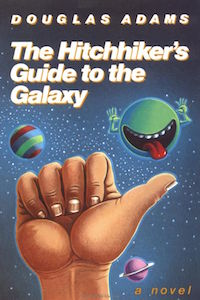 The #1 question in any story with humans and aliens: How do we communicate? Douglas Adams had a particularly neat solution to this problem in the form of the Babel Fish. (Fine, it’s a living creature. But it’s a creature that is essentially used as a form of technology among travelers—which is an important intersection to consider!) The whole point of the Babel Fish is that it feeds on your brainwave energy, then excretes a telepathic matrix into your brain, which gives you the ability to instantly understand any language. This idea, while gross-sounding, is a pretty great way of dealing with translation issues without a device that is essentially just a giant super-fast dictionary. It’s such a cool idea that it has been cribbed by other sci-fi narratives, too (like Farscape’s translator microbes).
The #1 question in any story with humans and aliens: How do we communicate? Douglas Adams had a particularly neat solution to this problem in the form of the Babel Fish. (Fine, it’s a living creature. But it’s a creature that is essentially used as a form of technology among travelers—which is an important intersection to consider!) The whole point of the Babel Fish is that it feeds on your brainwave energy, then excretes a telepathic matrix into your brain, which gives you the ability to instantly understand any language. This idea, while gross-sounding, is a pretty great way of dealing with translation issues without a device that is essentially just a giant super-fast dictionary. It’s such a cool idea that it has been cribbed by other sci-fi narratives, too (like Farscape’s translator microbes).
And of course, if Arthur Dent didn’t have access to one, there’s no way he’d be an effective companion to his pal Ford Prefect, right? He needs that bridge between him and that galaxy. On the downside, it does make him capable of understanding Vogon poetry. So it’s not all sunshine and daisies on the road to Communicative Happiness.
von Neumann Machines (vN by Madeline Ashby)
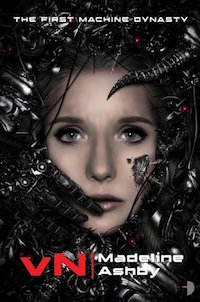 The humans robots of Madeline Ashby’s series are von Neumann machines, which means that they are capable of self-replicating. This means a robot can have or “create” their own family—even if only by making copies of themselves. vN tackles intricate concepts of consciousness and selfhood. What is individuality when your version of procreation leads to many versions of yourself? What would a community of beings like this come to resemble, and how would they relate to one another? Amy Peterson’s journey to learn more about herself, her family, and her world are evolved from concepts of what artificial life might look like if it took this form.
The humans robots of Madeline Ashby’s series are von Neumann machines, which means that they are capable of self-replicating. This means a robot can have or “create” their own family—even if only by making copies of themselves. vN tackles intricate concepts of consciousness and selfhood. What is individuality when your version of procreation leads to many versions of yourself? What would a community of beings like this come to resemble, and how would they relate to one another? Amy Peterson’s journey to learn more about herself, her family, and her world are evolved from concepts of what artificial life might look like if it took this form.
And it’s not that far-fetched either: John von Neumann was a mathematician and physicist who, along with creating his own particular architecture for computers, was the first to carefully study the idea of self-replicating machines. He proposed a kinematic self-reproducing model as a thought experiment, and eventually went on to develop an even more abstract model that was based on cellular structures. So Amy’s existence, fictionally speaking, is a natural progression from a very real scientific concept.
The Epstein Drive (Leviathan Wakes by James S.A. Corey)
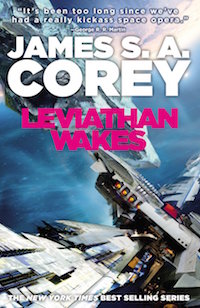 The entire plot of the Expanse series revolves around humanity’s ability to travel to the asteroid belt and outer planets, which they then colonize. None of this would be remotely possible without the Epstein Drive, created by Solomon Epstein well over a century before the start of the first book, Leviathan Wakes. It is a modified fusion drive that allows spaceships to maintain thrust throughout their entire voyages, allowing for continual increases in speed over long distances. Sadly, it’s inventor dies during the very first successful voyage, incapable of stopping his space yacht once as it reached speeds he hadn’t anticipated.
The entire plot of the Expanse series revolves around humanity’s ability to travel to the asteroid belt and outer planets, which they then colonize. None of this would be remotely possible without the Epstein Drive, created by Solomon Epstein well over a century before the start of the first book, Leviathan Wakes. It is a modified fusion drive that allows spaceships to maintain thrust throughout their entire voyages, allowing for continual increases in speed over long distances. Sadly, it’s inventor dies during the very first successful voyage, incapable of stopping his space yacht once as it reached speeds he hadn’t anticipated.
Epstein’s last thoughts are sadness that he will never get to experience the consequences of the drive he built—because he knows it is will change humanity’s course forever. It will end the looming threat of war between Earth and Mars, it will allow them to reach the asteroid belt and mine the minerals they need, and humans will be able to explore farther than ever before. And he’s right. His engine drives the course of humanity over James S. A. Corey’s entire ongoing space opera.
Threeps (Lock In by John Scalzi)
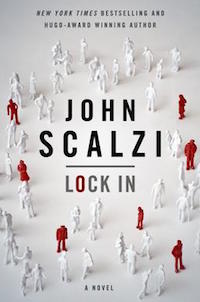 Lock In features a world beset by a virus known as Haden’s Syndrome. While most people who contract only the disease only exhibit symptoms on par with the flu, one percent of these victims experience “lock in”; paralyzed completely but fully awake. These few—known as Hadens—are capable of experiencing life via robotic transports called “Threeps,” which can go out into the world and interact on their behalf, controlled by an internet-like interface between the robots and their brains. (Threeps are adorably named for Star Wars’s fussy protocol droid C-3PO.)
Lock In features a world beset by a virus known as Haden’s Syndrome. While most people who contract only the disease only exhibit symptoms on par with the flu, one percent of these victims experience “lock in”; paralyzed completely but fully awake. These few—known as Hadens—are capable of experiencing life via robotic transports called “Threeps,” which can go out into the world and interact on their behalf, controlled by an internet-like interface between the robots and their brains. (Threeps are adorably named for Star Wars’s fussy protocol droid C-3PO.)
The world of John Scalzi’s Lock In is essentially the same as ours–the story is actually a police procedural–but if you omit the mind-to-machine interface that makes Haden-controlled Threeps possible, the story nevertheless becomes irrevocably altered. There’s really only one piece of tech in Lock In, but that tech has enormous implications for the future of mankind.










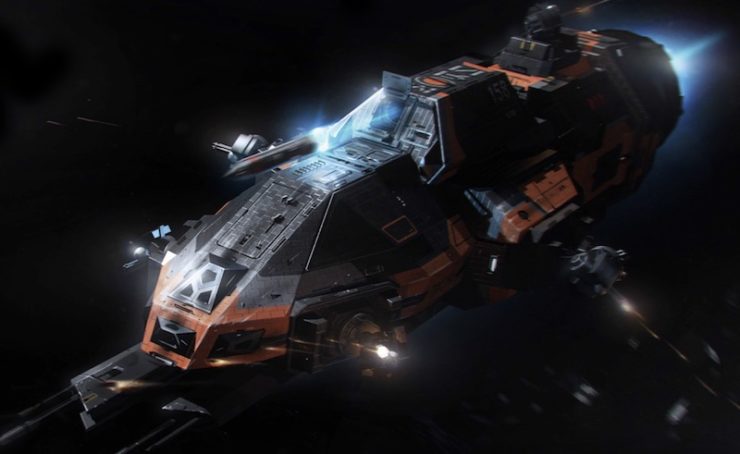
In The Three Body Problem it’s Ye Zhetai’s daughter, Ye Wenjie, who makes contact with the Trisolarans! Sorry to be that person
Frankly the very best books are those that take one small change, and really run with it.
I love Bujold’s Vorkosigan series for example, where she takes the simple idea of a uterine replicator that removes the burden of carrying a child to term, and then heads in all different directions. Planets of only men. Quaddies, born for zero G. The ability to fix genetic problems … and create them on demand. Biological research without harming mothers, so removing half the moral burden. Biological repair that can impose a moral burden.
Sure, she has wormholes and antigravity and all sorts of fancy tech, but the humble replicator actually underpins almost all of it.
Hi, Emily. I really enjoyed your Harry Potter reread and left a bunch of comments I was hoping you’d see and respond to. Did you never notice them?
Haden… Christiansens?
In Too Like the Lightning by Ada Palmer, there are incredibly high speed, self-driving (controlled by a human-computer interface network) flying cars which allow you to live, work and play anywhere on Earth in the same day. Without that technology, not only would the plot of the story and the interactions of the main characters be impossible on its short timeline, but their post-nation-state society itself would not be possible.
There’s David Weber’s Impeller Drive from the Honorverse, which was just an excuse for Age of Sail in Spaaaaace. Though for a lot of SF, the absence of the FTL and/or thermodynamic handwavium would ruin the story pretty quickly. But with Weber even just swapping out drive technology would trash the Honor Harrington books.
Note sure if the below examples are more properly TV, but what the heck.
Dr. Who: the TARDIS;
Babylon 5: Jump gates.
Thanks for reading my musings.
AndrewHB
The Stargates in Stargate are pretty essential to the plot. Without the Stargates then the Stargate program on the Stargate TV show wouldn’t be able to Stargate to other planets, then Stargate the TV show wouldn’t really be any fun.
The “jaunt” teleportation system is integral to Alfred Bester’s The Stars My Destination.
The “AI and linked human bodies” tech of Ann Leckie’s Ancillary sequence is pretty essential, not least for defining the protagonist; without it, Breq would have been simply a regular human soldier gone renegade.
The titular Machine of E M Forster’s The Machine Stops, though I’m not sure if that really counts as a single device rather than a general extrapolation of all (then) current technology combined into a single smothering world-box.
threeps ….Anne McCaffery the ship who sang
which was first?
Ship who Sang came out originally in hardcover in 1970. McCaffrey FTW.
@11 & 12: C. L. Moore FTW X2 (“No Woman Born”, 1944).
Several things in Ender’s Game, but probably the Ansible is the most important.
Further to the FTL travel problem and solution – the Gap Drive in Donaldson’s Gap Series, perchance?
The initial Martian storm in The Martian that appears to kill the protagonist – Andy Weir acknowledged that a Martian storm in reality would never be bad enough to cause the problems that kicked off the plot.
80% of SF would be spoiled if you take away whatever enables FTL travel.
Robert Heinlein’s novels The Moon is a Harsh Mistress wouldn’t be possible without the supercomputer, and Time Enough for Love without rejuvenating technology!
The ansible originated with LeGuin’s The Left Hand of Darkness, Published in 1969.
Actually Ursula K LeGuin used it in 1966 in Rocannon’s World, so earlier than in her The Left Hand of Darkness
http://www.jessesword.com/sf/view/16
1966 U. K. Le Guin Rocannon’s World 113
Noting the coordinates at which the ansible sender was set, he changed them to the coordinates of the League HILF Survey Base for Galactic Area 8, at Kerguelen, on the planet New South Georgia—the only coordinates he knew without reference to a handbook.